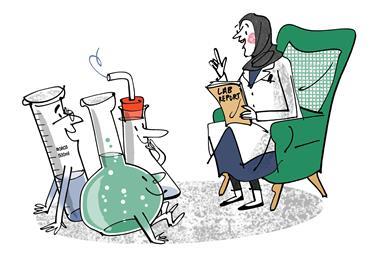Bioorthogonal chemistry was born in the early 2000s when there was a growing realisation that the best way to unpick biological processes was to probe biomolecules in their native environments. Scientists had been making headway using fluorescent proteins to illuminate how proteins operate in living cells, but researchers in Carolyn Bertozzi’s lab were interested in a different, much less understood cell product: glycans. Studying these polysaccharides posed a problem because their biosynthesis doesn’t lend them to genetically encoded reporter molecules like proteins do. So they had to find another way.
For a long time, the research community neglected glycoscience. Glycans are omnipresent across biology, yet they were initially assumed to be primarily for structure rather than function. Compared to proteins and nucleic acids, glycans are much more complicated. For a start, proteins comprise linear sequences of amino acids of which there are 20 to pick from. Likewise, nucleic acids are a combination of four different bases. But when it comes to glycans, in mammals there are more than 30 different monosaccharides that can act as building blocks, each of which has multiple potential branching points.
Such structural complexities are just one of the complications of trying to study glycans. Advances by Bertozzi’s team and others regarding methods for attaching labels onto them via suitably selective reactions have brought us closer to understanding the roles these biomolecules play. Developments surrounding automated glycan synthesis as well as chemoenzymatic strategies for altering cellular glycans to study their function are also part of the story.
We now know that glycans play critical roles in virtually every biological process. Living cells are covered in glycans – they’re involved in intercellular and extracellular signalling. As well as being found on lipids and proteins, glycans can also be found as free compounds, for example in human breast milk. Moreover, certain glycans have been shown to activate, temper and inhibit specific immunological processes, including anticancer responses.
It’s over 70 years since Walter Morgan discovered that carbohydrates characterise the ABH blood group system. That we have only correlated glycans with health and disease during the past couple of decades is therefore somewhat surprising. Nevertheless, several products based on isolated or synthetic glycans, or molecules that alter their expression and recognition are already on the market. Glycoscience research is certainly convoluted, but the potential benefits to society are broad. There might even be another Nobel in it.












No comments yet